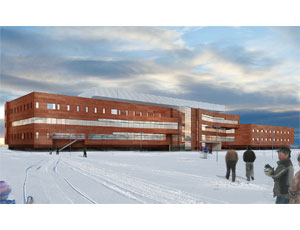While the American Recovery and Reinvestment Act has buoyed high-profile sectors such as transportation and energy, in Indian Country—the sovereign lands of 562 American Indian tribes across the United States—$3 billion in stimulus funding quietly has moved into development backlogged road improvements, hospitals, correctional facilities and schools. Many of the projects were planned but remained unfunded for years, in some cases for more than a decade.

The ARRA windfall gave cash-strapped tribes more capital than ever before but added constraints to an already idiosyncratic sector.
A March report by the National Congress of American Indians, a non-profit based in Washington, D.C., that advised Congress on the legislation and serves as ARRA tribal intermediary, concluded that while ARRA has provided unprecedented funding to address tribal needs, in the end it is “a drop in the bucket.”
Generally poor economic conditions, high unemployment, poverty and substandard infrastructure leave tribes far behind, requiring a long-term funding commitment, the report says.
Two recent conferences addressed these and other topics. Arizona State University presented “Construction in Indian Country” at Fort McDowell, Ariz., in May. The month before, the Rocky Mountain Indian Chamber of Commerce held the American Indian Business Expo in Denver.
Tribal jobs are often rural, with limited access, utilities and workforce, says Elsa Johnson, a CIIC organizer and consultant with Arviso/Oakland, a 51% Indian-owned construction firm with offices in the Four Corners region. Each tribe has its own laws and enforcement.
Cultural differences and negative past experiences can make tribes wary. “You do have to work at getting their trust,” says Prescott, Ariz.-based architect Douglas Stroh, who has designed more than 85 projects for Southwest tribes. “They’ve been burned a lot in the past.”
From concept to completion, cultural values make an impact on projects and vary among tribes.
Tribal projects are needed and bolster community pride, says Brad Gabel, vice president of the Native American division of Phoenix-based general contractor Kitchell Corp., which has performed nearly $1 billion of work in the sector over the past decade. “The work we do literally changes lives,” he says.
ARRA funding for tribes comes from a mixed bag of federal agencies, from the Bureau of Indian Affairs to the departments of Education and Justice. Challenges for applicants—such as stringent reporting, recordkeeping and time restrictions—are common.
Early on, leaders and agency staff tackled issues that were more tribal-related, says Dante Desiderio, NCAI’s economic development policy specialist.
Some agencies were unfamiliar with tribal applicants, Desiderio says. Self-governing tribes encountered delays...

Post a comment to this article
Report Abusive Comment